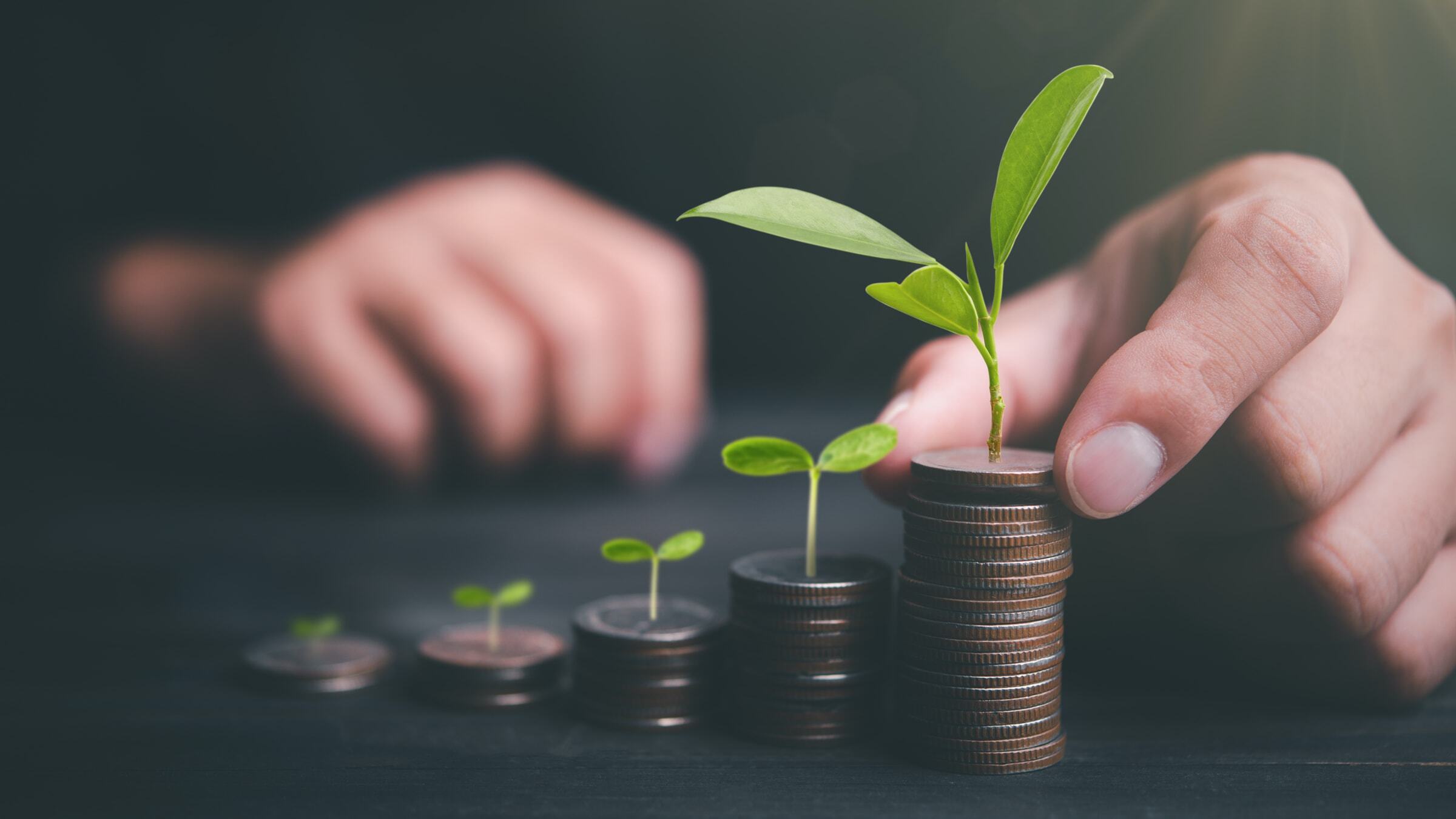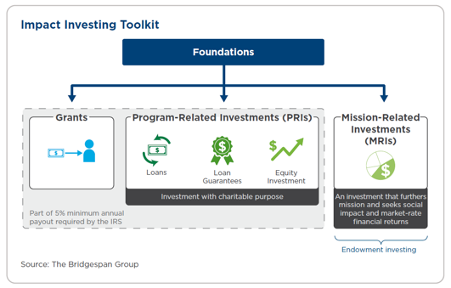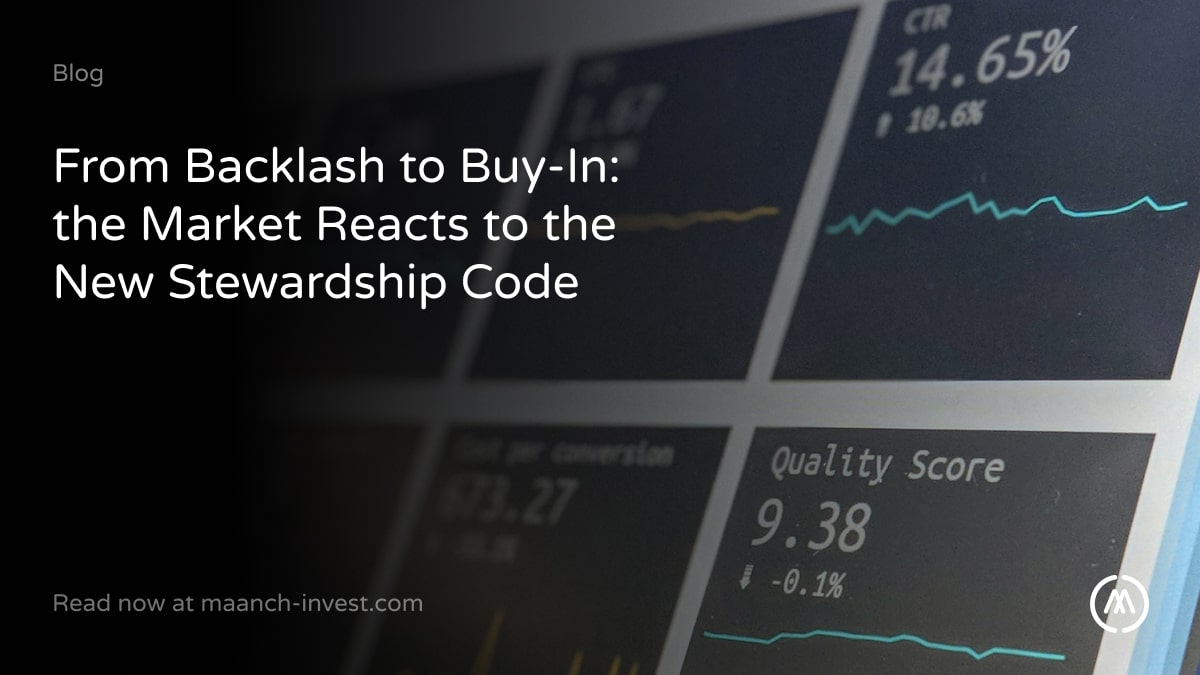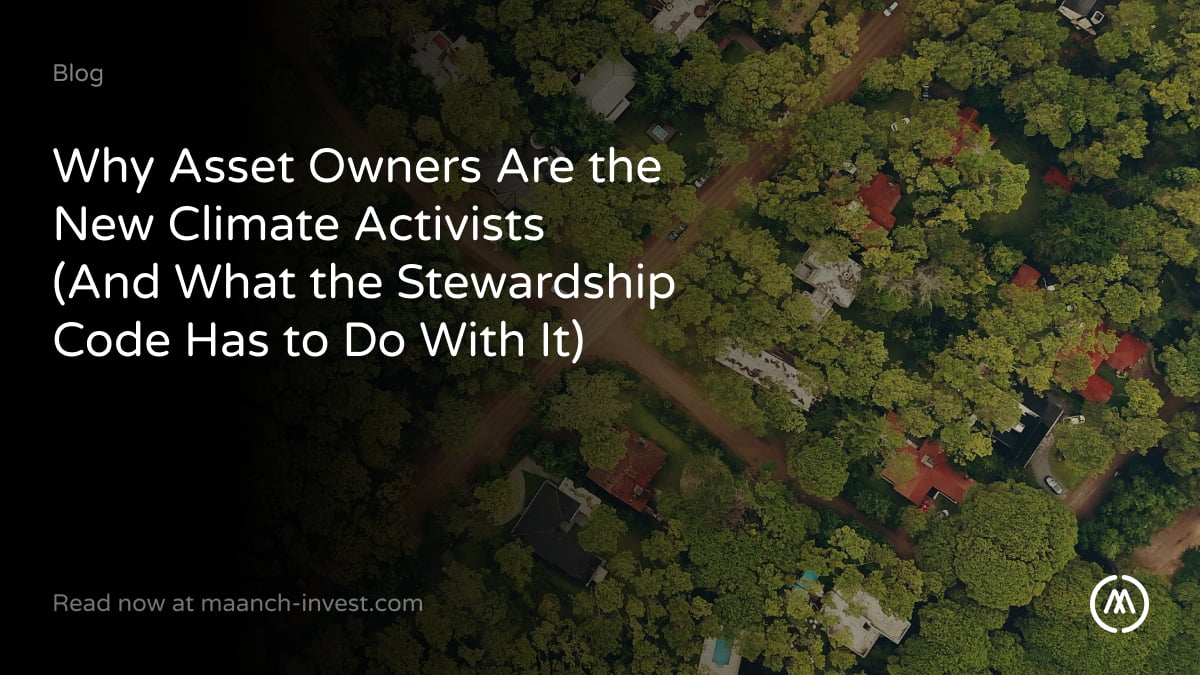2020 might just be that watershed year that redefines the impact ecosystem. The pandemic has become a catalyst for fresh thinking and important social and economic lessons as we endeavour to “build back better”. A key one being the need for a re-definition of capitalism including more sustainable investment and a broader purpose for companies. One of the most powerful frameworks to help us visualise the complexity of the challenges we face in a simple way is Kate Raworth’s 2017 doughnut model. This is a radical departure from traditional economic thinking, away from stalwarts like Kuznets and Milton Friedman towards a future-proof alternative that brings humanity into a sweet spot to meet all our human needs whilst protecting the planet . Some, like Amsterdam or Ireland, are adopting this framework to structure their #buildbackbetter journey.
We look at the doughnut model, explain its connection to the “global goals”, and put forward an agenda to make the necessary big shifts in resource allocation by investors, companies and philanthropic funders to achieve a better future for all.
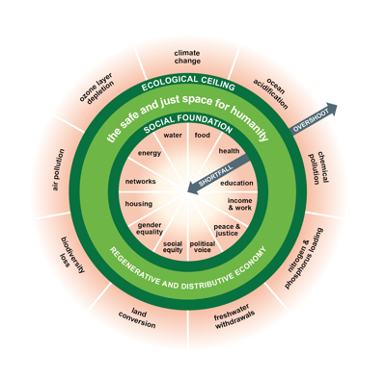
The central idea behind the model is for humanity to operate in the doughnut (the light green space) and not below the social foundation (in the hole) or above the ecological ceiling (space outside the doughnut). As the world emerges from the pandemic, the aim is to re-balance and find this sweet spot for humanity.
Doughnut Economics and the UN Sustainable Development Goals (SDGs)
The Doughnut is a visual representation of the needs behind the SDGs. Through it we can see a ‘destination’ or an ‘overall goal’, a point of convergence of our actions and the achievement of Agenda2030.

The UN SDGs are a set of 17 goals, 169 targets and 231 indicators, a blueprint to achieve a sustainable future for all by 2030. The pandemic is a further alarm bell, a wake up call for action for the decade.
These goals should provide a valuable checklist for ESG experts but more than this, they could be the guiding principles for corporate boardrooms in terms of both risk management and global opportunities; in fact, long term boardroom priorities. Hear it from the corporate leaders: LINK
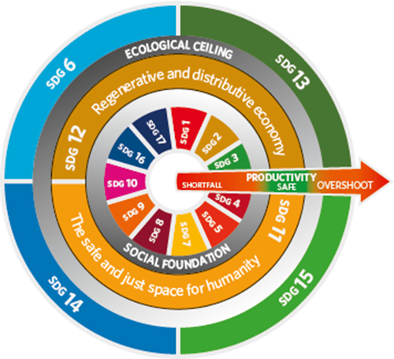
Goals 1 to 10 along with 16 map out the Social Foundation, with poverty elimination being a priority and linking up to peace as a key element in that journey. Goals 6, 13, 15 and 14 map out the Ecological Ceiling with climate change fast becoming a global priority. The sweet spot between both these ceilings contain the remaining 2 goals concerning consumption, production and sustainable habitats and communities – the safe operating space for humanity to maintain planetary health.
The Maanch Doughnut
In contrast to speculative and destructive short term practices, the doughnut framework helps to identify strategies that build multiple kinds of long-term value – “human, social, ecological, cultural, and physical” – in addition to a fair financial return. At Maanch, we build on the model to think in terms of the big reallocation of capital required globally to deliver this value; for example, greater investment in the enterprises and solutions which best address our human and planetary needs. As the SDGs represent the world’s most important to-do list, the framework can be used to help organizations navigate their way, and funnel their donations and investments to fund the $2.5 trillion annual shortfall if the SDGs are to be achieved by 2030. We want to help change the mindset of investors, companies and philanthropists, and make radical shifts in portfolio resource allocation towards unmet needs and planetary action. This is summarised below in a simple version of our own Maanch Doughnut:
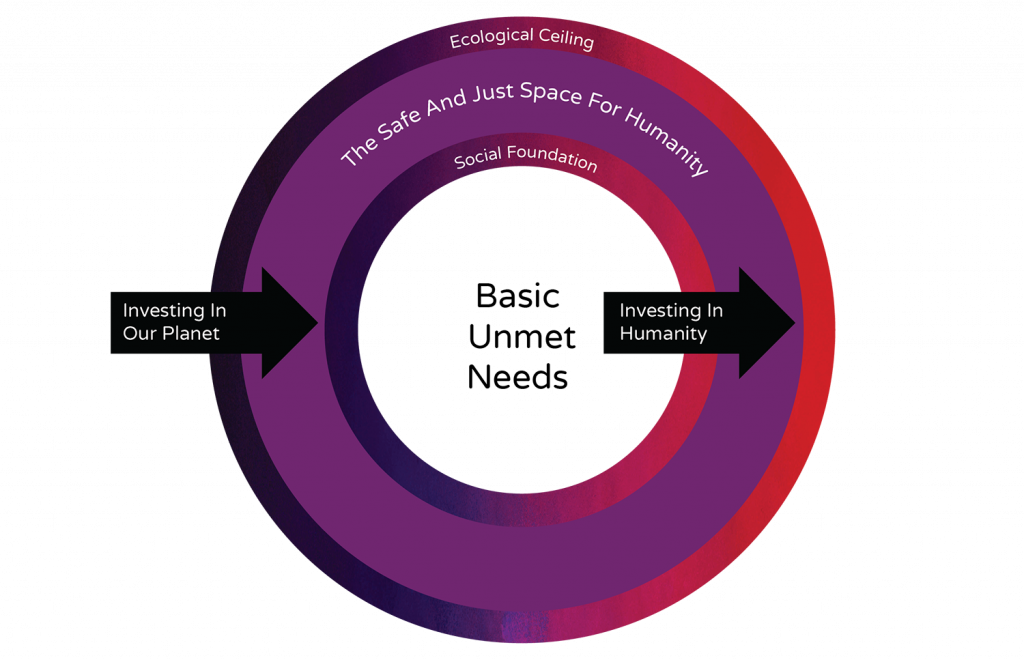
The Maanch Doughnut represents the target capital reallocation from investors, foundations, philanthropists and businesses away from human and environmental harm towards a positive impact on people and planet. The Maanch impact solution system makes this possible, a small step into using data and technology to facilitate the shift into the inclusive and sustainable space for humanity.
The Doughnut For Business and Investors
Drawing inspiration from circular economy theory, the doughnut is a regenerative and distributive model, a set of design principles, a visual roadmap for businesses and investors to “do good” and “invest in the good”. While ESG investment strategies are often limited to operational risks and negative screening, the doughnut aligns with a positive screening approach. For example, identifying and investing in companies and business practices which drive towards ethical supply chains or the goal of “mission zero” on climate (a response to the 1.5°C global warming target in the Paris Agreement, it is a collaborative effort by several countries to move towards an economy where emissions are balanced by absorbing an equivalent amount from the atmosphere).
There are of course many opportunities for improvement. Employee ownership, ethical purchasing, living wages, open design, equality and fair tax commitments are some ways to identify businesses that ‘do the doughnut’. The aim is to identify, resource and track positive, impact-seeking investments and business practices across the value chain, aligned to the SDGs. Unilever, Houdini, Patagonia and Good Energy are some of the businesses already on this journey. Patagonia is a trailblazer example; part of the BCorp Movement that commits to go beyond shareholder value to create multi-stakeholder business models that will link revenues to ethical investments and also inspire cultural transformations by linking consumption and impactful brands. But one big pain point is finding effective ways to articulate and report on this impact; and technology can help.
SDGs are serving as a benchmark for investments today as the limitations of ESG become apparent. The EU Taxonomy is a step in the right direction of organising regulatory provisions and transition tools to funnel financial assets into sustainable impact areas for the EU 2050 carbon neutral mission. The challenge then is to translate regulatory provisions of such kind into opportunities for all stakeholders. There is already some traction. In the first edition of the Annual Impact Investor Survey 2010-11 by GIIN, 85% of respondents used their own proprietary IMM systems (Impact Multiple of Money is an impact measurement methodology developed by the Rise Fund to estimate a company’s potential for impact before making an investment). One decade later, 89% used external systems, tools and frameworks for IMM. The most commonly used are the SDGs (73%), the IRIS Catalog of Metrics (46%), IRIS+ Core Metrics Sets (36%), and the Impact Management Project’s five dimensions of impact convention (32%): SOURCE.
We now need to translate this positive trend into more practical solutions; using data integration and digital dashboards to visualise the impact of portfolios and businesses, to enable better communication and decision making.
The Doughnut For Foundations and Philanthropists
In light of the catastrophic impact of Covid-19, it’s a moral dilemma for foundations to balance future focused investment with the funding of immediate life-saving needs. In order to realise philanthropy’s superpower, especially with the growth and concentration in wealth over the last few decades, and utilise the $500 billion in assets of European Foundations alone, we encourage major donors to reinvent themselves away from being grant-makers to become impact optimisers. This means moving away from very separate grant-making and investment management towards an integrated strategy and leadership body which looks to maximise “total portfolio impact” aligned to their charitable purpose.
Impact investing has evolved from a niche asset class to a $175 billion space with more diverse users and collaborations which harness capital for social and environmental uplift. Looking across the evolving social finance spectrum, there are traditional grants, PRI (Program-related investments) and MRI (Mission-related investments) that sustain themselves with competitive rates of return while advancing philanthropic goals.
But impact investing is only part of the solution. Investment firms, family offices and Foundations now have access to richer data sets and a much broader toolkit to help achieve impact across the whole asset portfolio. This includes intentional ESG and SDG investing and the alignment of the two key weapons in achieving a sustainable balance of risk, return and impact; namely Asset Selection and active shareholder Engagement.
In summary, using the doughnut and SDGs as a base, we can envisage the world’s biggest challenges and the impact-driven, capital reallocation needed to address them.
To get in touch with us to discuss your impact goals click here.
To learn more about Maanch and its impact click here.
